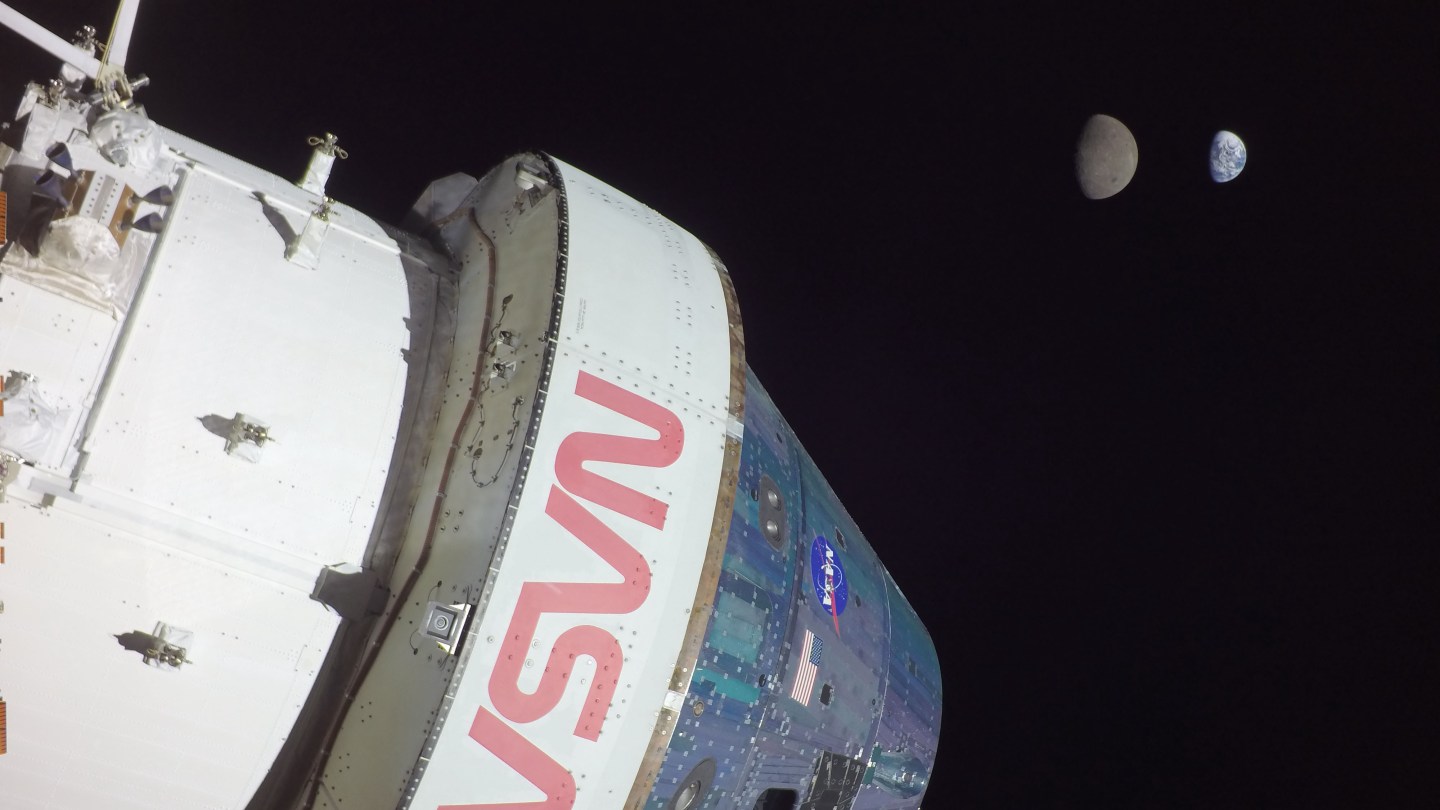Artemis Is Our Ticket Out Of Here
11:24 AM EST on December 1, 2022

I have, it turns out, something of a humiliation fetish, at least on a cosmic scale. I cannot get enough of imagery that makes the Earth, where I live, look like an afterthought. Ooh, tell me I'm nothing. Show me that I'm an invisible speck on an insignificant rock in a vast uncaring void. Really good for putting stuff in perspective. Makes the various things I'm currently worried about seem not such a big deal. My credit card company does not feel similarly, but lots of humans do: There's a reason why the Pale Blue Dot photo, despite being an objectively crappy image, is so famous and moving; and Carl Sagan's bit certainly helps. I'm also a fan of this image, Earth and its moon as seen from the Mars Express spacecraft, for capturing the scale of even just our local bit of the void. Ours is not a big Blue Marble; it is a very little one, a truth belied by the fact that all of its observers happen to be in the neighborhood.
Which is why it's so refreshing when we leave the neighborhood, if at first only for a little while. The image above is a selfie taken by the uncrewed Orion spacecraft on Monday, halfway through the 26-day Artemis I mission, from its position in orbit around the moon. In the background of the selfie are two cosmic bodies, and if you didn't already know, you'd likely guess wrong which was the planet and which was its satellite. Get far enough away from Earth and close enough to the moon, and the Earth looks the smaller of the two. Get even farther away and the Earth will be smaller than most things.
But Artemis I will not get farther away; it is coming home. From a maximum of 268,563 miles from Earth in that photo, Orion is a "go" for a burn Thursday afternoon to leave lunar orbit and begin the 10-day journey back here. This is an important test, because the next time it's up there, it'll have people in it. Artemis II is to insert four astronauts into lunar orbit for the first time since the 1970s, and then Artemis III, perhaps optimistically scheduled for 2025, will land them on the moon's surface. That is just the start.
The Artemis program, led by NASA in partnership with the European, Canadian, and Japanese space agencies, plans to begin, by the end of the decade, construction of the Lunar Gateway, a crewed space station orbiting the moon. This would be a mind-numbing accomplishment: one thousand times farther away than any space station we have ever made. The Lunar Gateway is planned to serve as the staging point for (and keep in mind we are getting increasingly speculative here) long-term lunar habitation, and crewed missions to Mars. Our neighborhood is getting bigger.
The point of a lunar construction and assembly yard is because it's more efficient to put together the so-called Deep Space Transport in lunar orbit, from components that would be stored or even built there, than it is to launch everything in one go from Earth; gravity, and all that. Because even getting just Orion into space was a feat accomplished only by the new Space Launch System (SLS), which boasts the most liftoff thrust and largest payload capacity of any rocket to ever exist. It is a monster:
SLS appears to have aced its first real test, and as a whole Artemis I has gone off like a dream: A scheduled maintenance burn for Orion today was canceled because its orbit was already spot-on. "It’s incredible just how smoothly this mission has gone," said NASA administrator Bill Nelson.
The ultimate wonder of Artemis, to me, comes from its relatability. Artemis boasts a distinctly human dimension, in contrast to the scales of the Webb Telescope. Artemis's missions are measured in days, not the billion-year timeframes the JWST is studying. The images Artemis sends back are not of dots of light, but of recognizable geography. Orion's testing is specifically about keeping the people inside alive. You can watch live video of the spacecraft and its view, right now, or anytime you want. Nothing here is theoretical; it is human sized, at human distances, and will take humans to places that humans can see with unaided human eyes, and within our own lifetimes. There are also human stakes, both in the lives of the future Artemis astronauts and in the potential long-term survival of the species if we can figure out how to get off this rock for good. Our planet itself may be cosmically insignificant, but it's turning out that the people who live on it might not be.
If you liked this blog, please share it! Your referrals help Defector reach new readers, and those new readers always get a few free blogs before encountering our paywall.
Deputy Editor
Stay in touch
Sign up for our free newsletter




